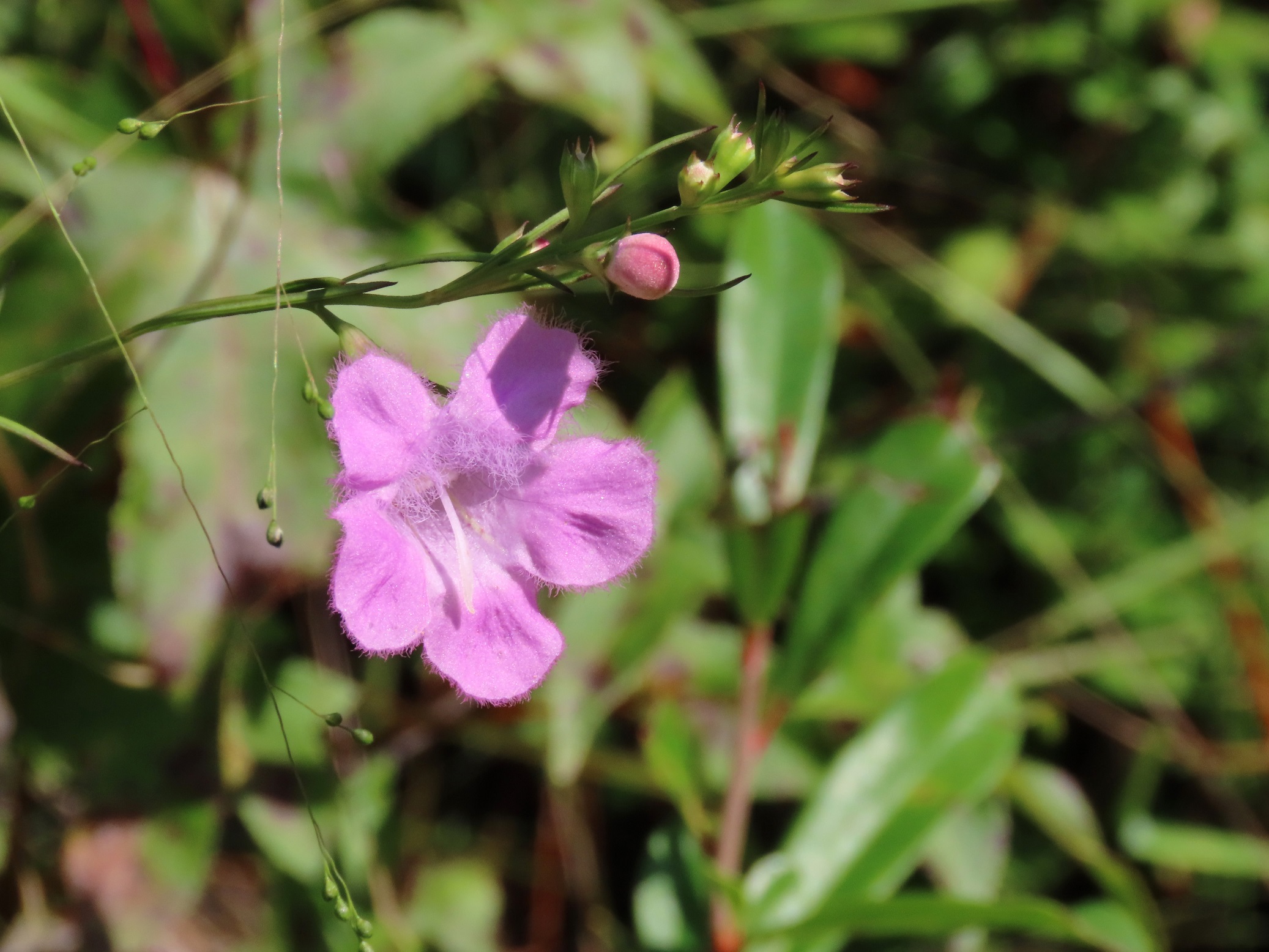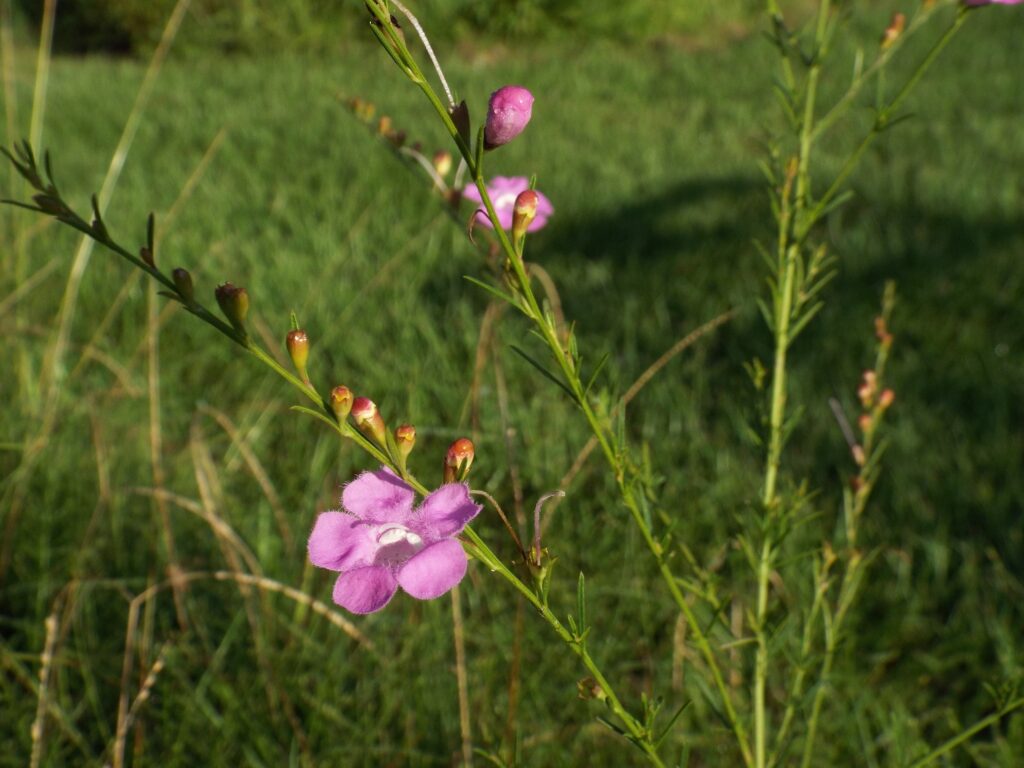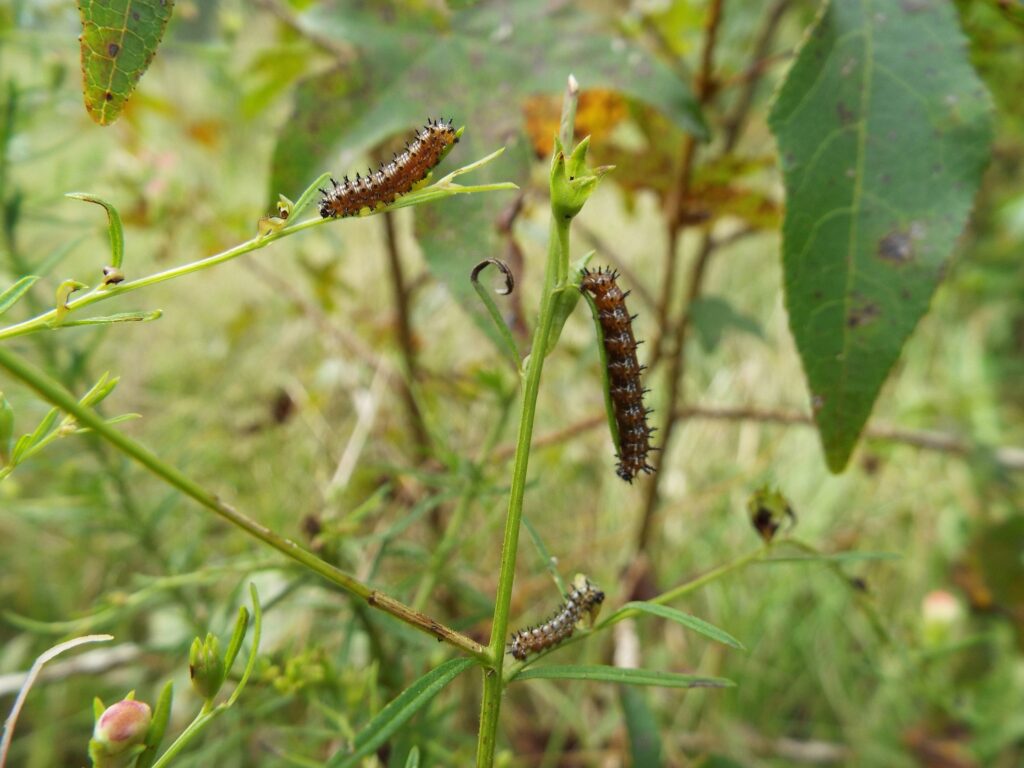



This week for Flora and Fauna Friday we have a secretly parasitic plant with a conspicuous flower and often under attack by butterflies: Purple False-Foxglove (Agalinus purpurea).
Purple False-Foxglove is a common wildflower in the Lowcountry. It’s found in fallow fields, meadows, overgrown roadsides, and other sunny, grassy habitats. We have five other species of False-Foxglove found in the Lowcountry, some rare and some common, that all have similar appearances and life histories. However, Purple False-Foxglove is by far the most common I encounter. So I’ll just be talking about that species specifically today. Purple False-Foxglove grows about three feet tall with thin, wiry stems and narrow, opposite, needle-like leaves. It’s best identified by its flowers, which blossom profusely across the plant in late summer and early fall. The blooms are a stubby five-petalled trumpet steeped in vibrant magenta with a pale-pink mouth lined by two ivory stripes and a scattering of purple spots. Its flowers are well loved by bees, of all shapes and sizes, and one particular species of butterfly. False-Foxgloves are a preferred host plant for the caterpillars of the Common Buckeye butterfly (Junonia coenia). Buckeye caterpillars are covered in dark branching spines over a body mottled in black, pearl-white, and burnt-orange. They can often be found feeding on the leaves of False-Foxglove plants. However, the Buckeyes are not the only ones mooching off a neighbor.
False-Foxgloves are interesting in that they’re parasitic. More precisely, they’re what’s known as hemiparasitic. Hemiparasites are not totally dependent on a host and can survive on their own if need be. This is why Purple False-Foxglove still has green leaves, as it is fully capable of feeding itself with photosynthesis. However, when given the chance, Purple False-Foxglove will tap into the root systems of its neighbors to siphon off nutrients. Usually, it will leach off of grasses but can parasitize most plants, including trees. Purple False-Foxglove’s love for sunny, sandy soils and ability to parasitize grasses has allowed it to carve out an interesting niche here in the Lowcountry. Fallow fields often become dominated by non-native grasses over time and hayfields are generally managed for non-native hay grasses. These habitats are very difficult for all but the hardiest of native plants to recolonize by brute force. Only a few species like Dogfennel, Nuttall’s Thistle, and Field Aster can outcompete a hay grass directly. However, Purple False-Foxglove is able to circumvent this obstacle by stealing from the grasses it’s competing against. So the better its host does, the better it does. This often makes Purple False-Foxglove the only wildflower able to overtop the hay and a welcome splash of color to the eyes in an otherwise uniform sea of green-brown grass.